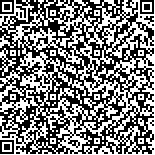| Quote
: |
马玉箫,童骄,方锐,蒋黎,葛金文.湖南省常德市缺血性脑卒中急性期风痰瘀阻证用药规律分析[J].湖南中医药大学学报英文版,2022,42(7):1164-1168.[Click to copy
] |
|
| |
|
|
| This paper
:Browser 1477times Download 483times |
| 湖南省常德市缺血性脑卒中急性期风痰瘀阻证用药规律分析 |
| 马玉箫,童骄,方锐,蒋黎,葛金文 |
| (常德市第一中医医院, 湖南 常德 415000;湖南中医药大学, 湖南 长沙 410208) |
| 摘要: |
| 目的 运用数据挖掘探析湖南省常德市缺血性脑卒中急性期风痰瘀阻证用药规律。方法 收集2018年1月至2021年6月常德市第一中医医院、桃源县中医医院、石门县中医医院收治的200例缺血性脑卒中急性期风痰瘀阻证患者,整理其中药处方,构建处方规范化数据库,对处方药物及其药性、药味、归经进行频数统计,采用关联规则与系统聚类分析其用药规律。结果 收集病历中共出现处方154个,纳入中药118种。其中45种中药频数大于10次,石菖蒲、半夏、甘草、白术、天麻等出现频率居高。常用中药四气主要为寒、温、平,五味主要为甘、苦、辛,归经主要为肝、肺、脾、胃经。茯苓-半夏等药物组合关联性较强。结论 湖南省常德市缺血性脑卒中急性期风痰瘀阻证处方用药法则以化痰祛瘀为主,兼以健脾、化湿、益气、活血。 |
| 关键词: 缺血性中风 脑卒中 急性期 风痰瘀阻证 用药规律 |
| DOI:10.3969/j.issn.1674-070X.2022.07.016 |
| Received:January 11, 2022 |
| 基金项目:湖南省常德市科技局研究项目(2020S046)。 |
|
| Analysis of medication rules of wind-phlegm-blood stasis syndrome in acute stage of ischemic stroke in Changde, Hunan Province |
| MA Yuxiao,TONG Jiao,FANG Rui,JIANG Li,GE Jinwen |
| (The First Chinese Medicine Hospital of Changde, Changde, Hunan 415000, China;Hunan University of Chinese Medicine, Changsha, Hunan 410208, China) |
| Abstract: |
| Objective To analyze the medication rules of wind-phlegm-blood stasis syndrome in acute stage of ischemic stroke in Changde, Hunan Province. Methods A total of 200 subjects with wind-phlegm-blood stasis syndrome in acute stage of ischemic stroke were chosen from The First Chinese Medicine Hospital of Changde, The Chinese Medicine Hospital of Taoyuan and The Chinese Medicine Hospital of Shimen from January 2018 to June 2021. Their traditional Chinese medicine prescriptions were collected to establish a standardized database of prescriptions. The herbal medicine and their properties, flavors and meridian tropism were studied by frequency statistics, and association rule analysis and systematic cluster analysis were used to study the medication rules. Results A total of 154 prescriptions were involved in prescriptions, including 118 types of Chinese materia medica, 45 types of Chinese materia medica were with the frequency ≥ 10. The high-frequency drugs in the prescription were Shichangpu (Acori Tatarinowii Rhizoma), Banxia (Pinelliae Rhizoma), Gancao (Glycyrrhizae Radix Et Rhizoma), Baizhu (Atractylodis Macrocephalae Rhizoma), Tianma (Gastrodiae Rhizoma) etc. The four Qi of commonly used traditional Chinese medicine were mainly cold, warm and flat, the five flavors were mainly sweet, bitter and pungent, and the meridians were mainly liver, lung, spleen and stomach meridians. The drug combination with strong correlation was Fuling (Poria)-Banxia (Pinelliae Rhizoma). Conclusion The treatment of wind-phlegm-blood stasis syndrome in acute stage of ischemic stroke in Changde, Hunan Province is mainly to dispel wind-phlegm and blood stasis, and also invigorate the spleen, remove dampness, invigorate Qi and promote blood circulation. |
| Key words: ischemic stroke cerebral apoplexy acute phase wind-phlegm-blood stasis syndrome medication rules |
|

二维码(扫一下试试看!) |
|
|
|
|


